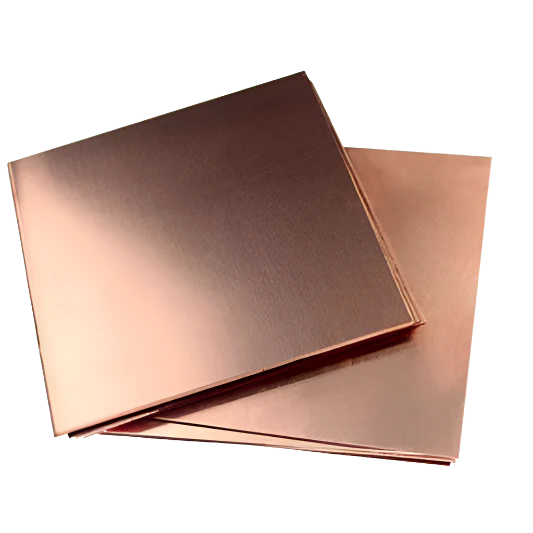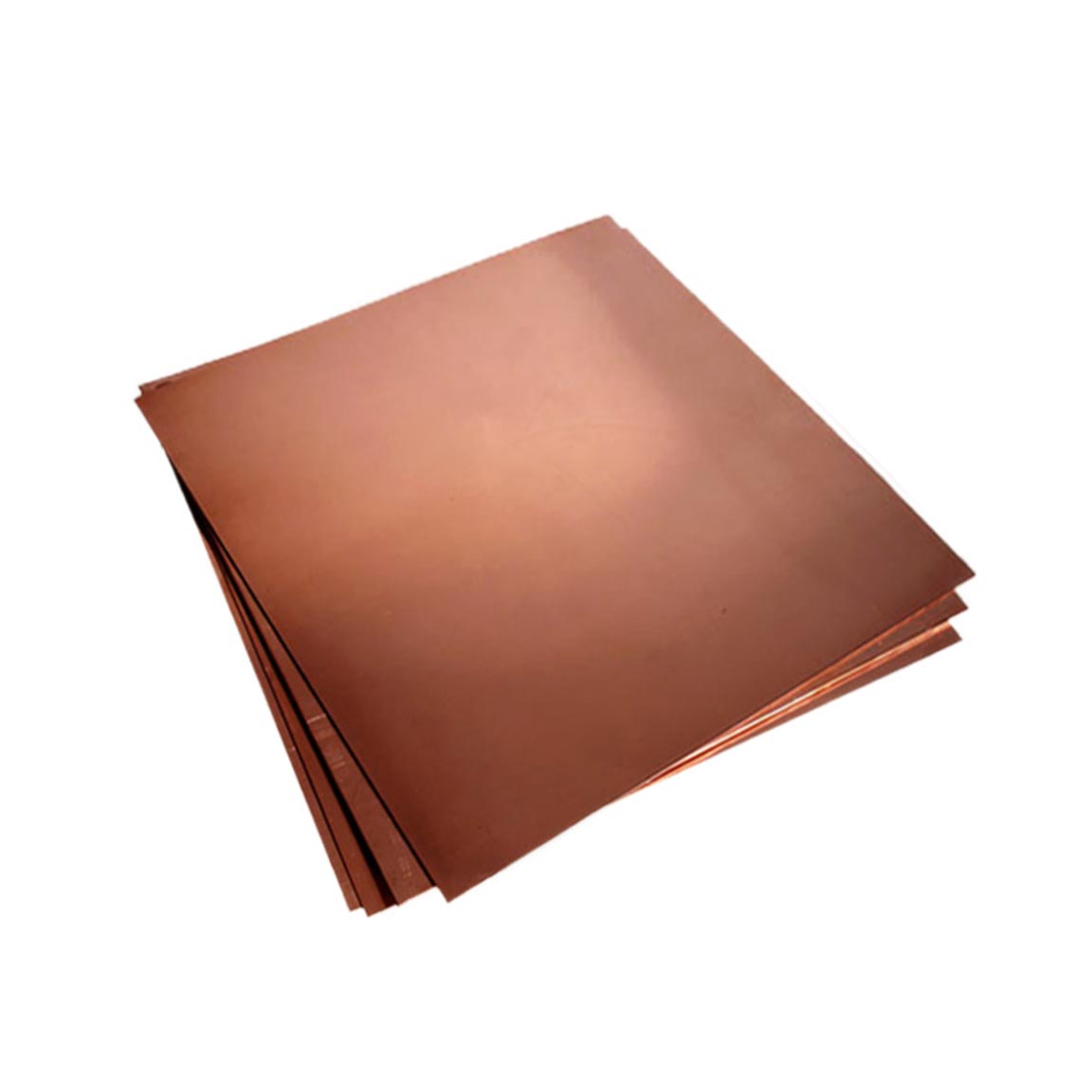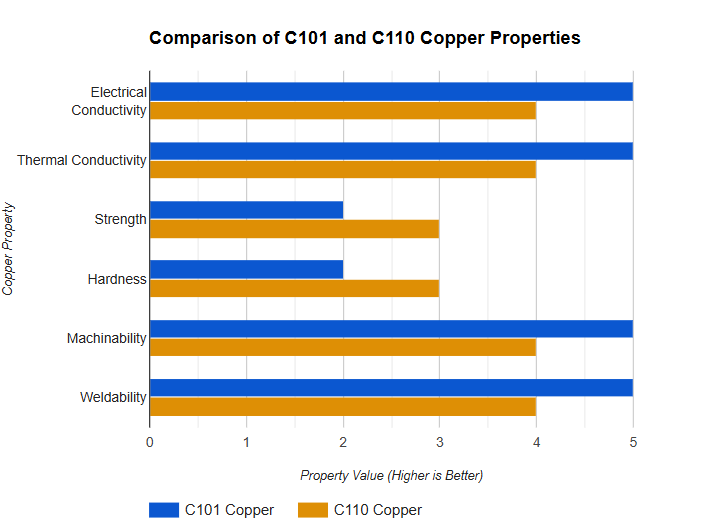Oct 31 , 2024
Copper has long been prized in manufacturing, especially in CNC machining, for its excellent electrical and thermal properties. But with so many grades of copper out there, like C101 and C110, how do you know which one is best for your specific CNC machining needs?
The Versatility of Copper in CNC Applications
Copper is widely used in precision machining because it offers a perfect mix of conductivity, malleability, and resistance to corrosion. These properties make it ideal for applications requiring detailed, exact parts that perform reliably under various conditions.
Why Copper is a Preferred Material in Precision Machining
Copper’s impressive thermal and electrical conductivity allows it to excel in electronic and thermal applications, where even minor flaws can impact performance. With its machinability and durability, copper stands out in the CNC machining world.
Copper comes in several alloy grades, each with its own unique properties and suitability for different tasks. Understanding the differences between these grades is crucial to maximizing the efficiency and quality of CNC-machined parts.
Understanding Copper Grades in CNC Machining
Copper grades, such as C101 and C110, are identified based on composition, conductivity, and formability. While both are nearly pure forms of copper, their unique properties make them better suited for certain types of CNC machining projects.
The Importance of Selecting the Right Copper Alloy
Choosing the wrong grade can lead to performance issues, higher production costs, and even part failure. Knowing when to opt for C101 or C110 can save time, resources, and potential rework.
C101 copper, also known as oxygen-free copper (OFC), boasts one of the highest purities among copper grades, often 99.99% copper or higher. This level of purity gives C101 copper excellent conductivity and minimal resistance.
Composition and Characteristics of C101 Copper
C101 is almost entirely copper, with negligible impurities, ensuring minimal oxygen content that could interfere with performance. It’s recognized for its exceptional ductility, making it easy to shape and form.
Properties That Make C101 Copper Suitable for CNC Machining
C101 copper’s high purity and malleability make it a great choice for parts requiring superior conductivity and precision.
Electrical and Thermal Conductivity of C101 Copper
With unmatched electrical and thermal conductivity, C101 copper is the go-to for sensitive applications like high-frequency circuits and advanced thermal systems.
Malleability and Ductility in CNC Processes
The malleable nature of C101 allows it to endure stress and deformation without losing integrity, which is essential for CNC processes requiring complex designs.

C110 copper, or electrolytic tough pitch (ETP) copper, is one of the most commonly used copper grades. While it has a slightly lower purity level than C101, it’s still highly conductive and versatile.
Composition and Characteristics of C110 Copper
Containing around 99.9% copper, C110 also includes trace oxygen levels. This small amount of oxygen improves its durability, making it less prone to brittleness under high temperatures.
Why C110 Copper is Commonly Used in CNC Machining
C110 copper is affordable, readily available, and maintains good machinability, making it a popular choice for everyday applications where ultra-high purity isn’t essential.
Cost-Effectiveness and Accessibility of C110
Compared to C101, C110 copper is more cost-effective, making it ideal for applications requiring large quantities of material without compromising too much on performance.
Physical and Chemical Properties of C110 Copper
C110 retains good conductivity, corrosion resistance, and machinability, though its conductivity is slightly less than C101 due to the added oxygen.

When choosing between C101 and C110, it helps to look closely at their distinct characteristics and how these impact their performance in CNC machining.
C101 copper is purer than C110, which enhances its conductivity and ductility. However, the cost of achieving this higher purity makes C101 more expensive.
Both grades offer high conductivity, but C101 copper leads slightly due to its purity, making it ideal for applications where low electrical resistance is critical.
C110 copper is more straightforward to machine than C101. The trace oxygen improves machinability and helps avoid potential issues like tool wear, which can occur with purer metals.
C101 shines in high-tech applications like aerospace and electronics due to its purity and conductivity, while C110 is favored in standard machining applications, electrical hardware, and components.

Choosing between C101 and C110 depends on specific project requirements, budget, and desired performance outcomes.
Factors to Consider When Choosing Between C101 and C110
Understanding your project’s needs will help determine if you need the higher conductivity and purity of C101 or the cost-effectiveness and durability of C110.
Project Requirements and Performance Needs
For applications demanding ultimate conductivity and performance under stress, C101 is a better choice. For general applications, C110 is often sufficient.
Cost and Availability Considerations
If cost is a major factor, C110 offers a balance between performance and affordability. For more specialized applications, the investment in C101’s purity can be worthwhile.
Each alloy has distinct benefits that make it suitable for different China Copper CNC machining projects.
Advantages of C101 Copper in High-Precision Parts
C101’s high conductivity and purity make it invaluable in specialized fields where even minor impurities can impact functionality.
Benefits of C110 Copper in Everyday Machining
With lower costs and good machinability, C110 copper serves as a go-to for a range of practical applications, from plumbing to electrical components.
Copper’s versatility allows C101 and C110 to serve in a variety of applications across industries.
Where C101 Copper is Most Effective
C101 is commonly used in high-end applications such as aerospace, telecommunications, and advanced electronics where precision and conductivity are paramount.
Key Uses of C110 Copper in Industry
C110 is frequently used for less specialized, high-volume needs like electrical connectors, plumbing systems, and industrial machinery parts.
When it comes to CNC machining, C101 and C110 copper each have unique advantages. C101 copper, with its ultra-high purity, is ideal for specialized applications where conductivity is crucial. Meanwhile, C110 copper, though slightly less pure, provides excellent machinability and cost-efficiency, making it suitable for general applications. Choosing between the two ultimately depends on balancing performance needs with budget considerations.